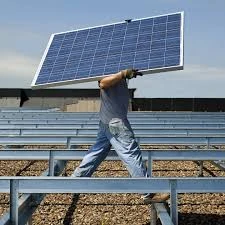solar inverter design
Designing Solar Inverters A Key Component in Solar Energy Systems
Solar inverters play a pivotal role in the efficiency and functionality of solar energy systems. As the bridge between solar panels and the electrical grid, these devices convert the direct current (DC) generated by solar panels into alternating current (AC), which is the standard form of electricity used in homes and businesses. The design of solar inverters is critical for maximizing energy output, ensuring reliability, and maintaining system safety.
Understanding Solar Inverter Types
There are primarily three types of solar inverters string inverters, microinverters, and power optimizers. String inverters are the most common in residential installations. They connect a series of solar panels (or a string) to a single inverter. This design is cost-effective and simple. However, the performance of the entire string can be affected by the shading of one panel.
Microinverters, on the other hand, are installed on each individual solar panel. This allows each panel to operate independently, maximizing the energy harvest from each unit. Although microinverters tend to be more expensive upfront, they often lead to better overall system performance, especially in installations where shading is a concern. Power optimizers serve as a hybrid solution, optimizing the output of each panel while still utilizing a string inverter for system management.
Efficiency and Performance Considerations
The efficiency of solar inverters is a critical design consideration. The inverter must convert DC electricity into AC with minimal losses, typically above 95% efficiency for modern systems. High-quality inverters also incorporate features that allow them to handle variations in solar irradiation and temperature, ensuring consistent performance throughout the day and across seasons. Designing inverters that include Maximum Power Point Tracking (MPPT) technology enhances efficiency further by continuously adjusting to the maximum power output of solar panels under varying conditions.
solar inverter design

Stringent Safety and Regulatory Standards
Inverter design must also comply with various safety and regulatory standards to ensure safe operation. This includes protection against overcurrent, short-circuiting, and ground faults. Modern designs often include advanced monitoring features that allow users to track performance and diagnose issues in real-time. Integration with home automation systems can also enhance the functionality and user experience, providing seamless communication between solar energy systems and home energy management systems.
Innovations in Solar Inverter Technology
As solar technology advances, the design of solar inverters continues to evolve. Innovations in materials, such as the use of silicon carbide (SiC) and gallium nitride (GaN), are leading to smaller, lighter, and more efficient inverters. In addition, the integration of battery storage with solar inverters has become increasingly relevant, facilitating energy storage solutions that help users manage their energy consumption more effectively.
Conclusion
The design of solar inverters is a critical aspect of solar energy systems, affecting everything from efficiency and safety to user experience. As the demand for renewable energy sources grows, the continued innovation in inverter technology will play a fundamental role in harnessing the full potential of solar energy. By focusing on efficiency, safety, and advanced features, the future of solar inverters promises to make solar energy more accessible and effective for users around the globe.
-
Understanding the Advantages of Solar String Inverters for Your Energy SystemNewsApr.29,2025
-
Choosing the Right PV Inverter: A Comprehensive GuideNewsApr.29,2025
-
The Future of Solar Power: Exploring Bifacial Solar PanelsNewsApr.29,2025
-
The Complete Guide to Solar Panels: Efficiency, Cost, And InstallationNewsApr.29,2025
-
The Best Options for Efficiency and Cost-EffectivenessNewsApr.29,2025
-
Harnessing the Power of Off-Grid Solar Inverters for Energy IndependenceNewsApr.29,2025







